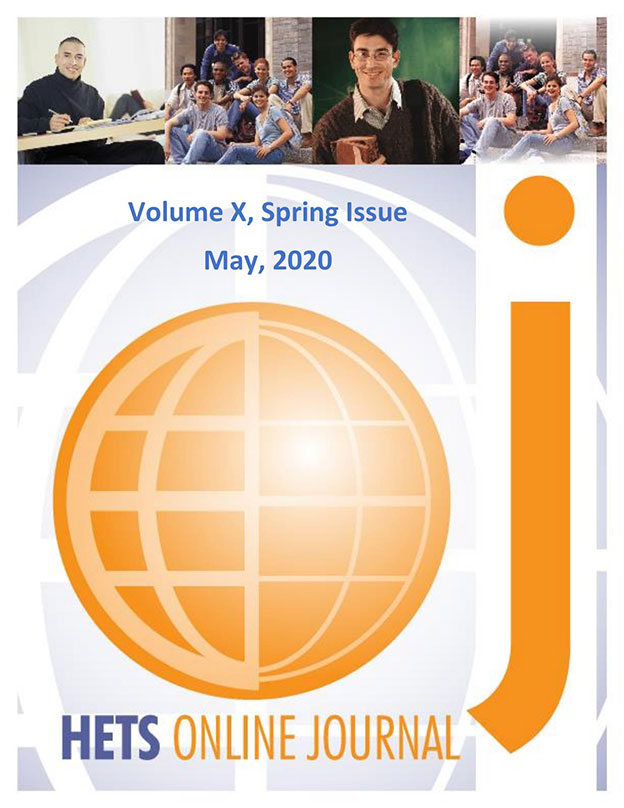Higher Education: Factors and Strategies for Student Retention
DOI:
https://doi.org/10.55420/2693.9193.v10.n2.14Keywords:
Student retention, Higher educationAbstract
Education emerged out of the necessity different countries had for better-prepared workers. Well-educated citizens are responsible for taking the best measures for society’s social, financial, and political development (Claudio, 2002). Nevertheless, higher education institutions confront the problem of retaining students and helping them finish their academic degrees. This led me to research the role educational institutions have in retaining students and what should professors do at Bronx Community College (BCC) and other institutions.
Objectives:
-
Present academic offering factors related to the pedagogic process and social demands which can affect the retention of students in universities and Bronx Community College.
-
Present strategies that can help with social demands and academic offering factors which influence the retention of students in universities and Bronx Community College.
-
Promote strategies recommended by some retention models (Tinto, 1975, 1987; Bean and Metzner, 1986; Pascarella, 1991) and research showing the effectiveness of those strategies in retaining university students.
All the suggested strategies in this article can be used as reference so higher education institutions can fulfil their commitment to the teaching process and to society and students do not abandon their studies. These practices can be applied at colleges, universities, or they may be substituted according to the educational policies of different countries. However, while higher education institutions have worked hard to retain more students through different strategies, there are always students who do not finish their studies.
Metrics
References
Bean, J. P., & Metzner, B. S. (1985). A conceptual model of nontraditional undergraduate student attrition. Review of Educational Research, 55, 485- 540.
Bronx Community College. (2019-20). Bronx Community College Retention Action Plan. Office of Institutional Research.
Bronx Community College, Isekenegbe, T. & Pugliese, S.J. (February 2019). Self-Study for the Middle States Commission on Higher Education.
Campbell, S.M., & Nutt, C.L. (2008). Academic Advising in the New Global Century: Supporting Student Engagement and Learning Outcomes Achievement. Peer Review, 4-7.
Claudio, R. (2002). El concepto de la efectividad institucional: Énfasis en el cumplimiento con la visión y las metas. Visión y perspectivas de la educación puertorriqueña. San Juan, PR: Impresora Oriental. https://www.edvisors.com/college- loans/federal/introduction-to-federal-student-loans/
Hanover Research. (2010). Overview of Student Retention Theories, Strategies, and Practices at Peer Institutions. Retrieved from: https://www.algonquincollege.com/academic- success/files/2014/12/Overview-of-Student-Retention-Theories-Strategies- and-Practices-at-Peer-Institutions.pdf?file=2014/12/Overview-of-Student- Retention-Theories-Strategies-and-Practices-at-Peer-Institutions.pdf
Hanover Research. (2014). Strategies for Improving Student Retention. Retrieved from: https://www.hanoverresearch.com/media/Strategies-for- Improving-Student-Retention.pdf
Harvard College. (April 2020). What is Harvard’s graduation rate? Retrieved from: https://college.harvard.edu/search?keys=graduation+rate
Johnson, S.D. & Willging, P.A. (October 2009). Factors that influence students’ decision to drop out of online courses. Journal of Asynchronous Learning Networks. Volume 13, Issue 3.
Journalist, Parents & Community Members. (2013). Student Voice. The Glosary of Education Reform. Retrieved from: https://www.edglossary.org/student-voice/
Kandiko, C. B. & Mawer, M. (2013). Student Expectations and Perceptions of Higher Education. London: King’s Learning Institute.
Kim, P. (2019). 23 Colleges Dropout Statistics That Will Surprise You. Retrieved from: https://www.creditdonkey.com/college-dropout-statistics.html
Kpolovie, P. J. and Lale, N. E. S. (2017). Globalization and Adaptation of University Curriculum with LMSs in the Changing World. European Journal of Computer Science and Information Technology. (Vol.5, No.2, pp.28-89).
Lau, L.K. (Fall 2003). Institutional Factors Affecting Student Retention. Online Research. Education, Vol. 124, No. 1. Retrieved from: https://www.uccs.edu/Documents/retention/2003%20Institutional%20Fact ors%20Affecting%20Student%20Retention.pdf
Moody, J. (March 2019). How to avoid dropping out of College. Retrieved from: https://www.usnews.com/education/best-colleges/articles/2019-03- 20/dropping-out-of-college-why-students-do-so-and-how-to-avoid-it
National Center for Educational Statistics. (2019). The Condition of Education. Retrieved from: https://nces.ed.gov/pubs2019/2019144.pdf
National Center for Educational Statistics. (2015-2018). Retrieved from: https://nces.ed.gov/programs/coe/indicator_ctr.asp
Office of Institutional Research. (2019). Bronx Community College Retention/Completion Facts.
Pascarella, E. T., & Terenzini, P. T. (1991). How college affects students. Jossey- Bass: San Francisco.
Safier, R. (2018). Explore 7 Common Types of Scholarships. U.S. News. Education. Retrieved from: https://www.usnews.com/education/scholarship-search- insider/articles/2018-03-15/7-types-of-scholarships-that-can-help-pay-for- college-graduate-school
Sagenmüller, I. (2020a). Main factors that affect student retention in higher education. Retrieved from: https://www.u-planner.com/en-us/blog/main- factors-that-affect-student-retention-in-higher-education
Sagenmüller, I. (2020b). Student retention: 8 reasons people drop out of higher education. Retrieved from: https://www.u-planner.com/en-us/blog/student- retention-8-reasons-people-drop-out-of-higher-education
Staff, W. (2015). Top 11 Reason Why College Students Drop Out: Don’t Let it Happen to you. Retrieved from: https://www.petersons.com/blog/top-11- reasons-why-college-students-dropout-dont-let-it-happen-to-you/
Stallman, H.M. (2011). Psychological distress in university students: A comparison with general population data. Australian Psychological Society. Retrieved from: https://aps.onlinelibrary.wiley.com/doi/abs/10.1080/00050067.2010.48210 9
Suryadi, B., Ratna, D., Hamidah & Hanifa, F. (2018). Career orientation of senior secondary school students. Retrieved from:
https://www.researchgate.net/publication/322762155_Career_orientation_ of_senior_secondary_school_students
Tapia, M. (2000). La solidaridad como pedagogía. Buenos Aires, Argentina: Ciudad Nueva.
Taylor, J. (2018). Factors Influencing Student Retention in Higher Education. Retrieved from: https://www.essaytyping.com/factors-influencing-student- retention-in-higher-education/
Tinto, Vincent (1975). Dropout from Higher Education: A theoretical synthesis of recent research. Review of Educational Research 45: 89-125.
Tinto, V. (2004). Student Retention and Graduation: Facing the Truth, Living with the Consequences. Washington, DC: The Pell Institute.
Tinto, V. (2005). College Student Retention: Formula for Student Success. (1rst ed.). West Port, KT: Praeger Publisher.
Vázquez, A. (2009). Filosofía educativa de una escuela abierta a la comunidad. Río Piedras, PR: Publicaciones Gaviota.
Downloads
Published
How to Cite
Issue
Section
License
Copyright (c) 2022 Barbara Flores-Caballero

This work is licensed under a Creative Commons Attribution-NonCommercial-ShareAlike 4.0 International License.
Open Access Policy Statement
HETS Online Journal has adopted an open access policy and provides immediate access to its content free of charge to the reader. The journal does not pass on the cost of publication or submission of manuscripts, known as an Article Processing Charge (APC), to authors.
HOJ is licensed under CC-BY-NC-SA.


